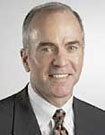|

|
The
views expressed
on this page are soley those of the author and do not
necessarily
represent the views of County News Online
|
 |
Townhall
Psychiatry
Ain't What It Used To Be
Steve Chapman
Jul 19, 2015
There was a time when most of what I knew about psychiatrists came from
Woody Allen. In his 1973 movie "Sleeper," his character wakes up in the
future and complains, "I haven't seen my analyst in 200 years. He was a
strict Freudian, and if I'd been going all this time I'd probably
almost be cured by now." But even his treatment sounded better than
what Jack Nicholson's character got in "One Flew Over the Cuckoo's
Nest" for being rebellious: a lobotomy.
Those films imprinted a couple of lessons about psychiatry. The first
was that mental health professionals were useless; the second, that
they were dangerous. No surprise that in the 1970s, Thomas Szasz's
book, "The Myth of Mental Illness," got a lot of attention.
Szasz had grounds for doubt. In his new book, "Shrinks: The Untold
Story of Psychiatry," Jeffrey A. Lieberman writes, "Back then, the
majority of psychiatric institutions were clouded by ideology and
dubious science, mired in a pseudo-medical landscape where devotees of
Sigmund Freud clung to every position of power."
Lieberman, a psychiatrist and chairman of psychiatry at the Columbia
University medical school, is aware of the many wrong turns the
profession has taken, which his book recounts. But he contends that it
has come a long way and now offers real solutions to real problems.
Recently, he spent an hour on the phone with me -- well, more like 50
minutes. Two themes emerged. The first is that his profession has a lot
to apologize for. The second is that judging today's psychiatry by what
happened decades ago is like judging modern surgery by the battlefield
amputations of the Civil War.
When he was born in 1948, Lieberman attests, "not a single
therapeutically effective medicine existed for any mental disorder.
There were no antidepressants, no antipsychotics, no anti-anxiety
drugs...
Read the rest of the article at Townhall
|
|
|
|

